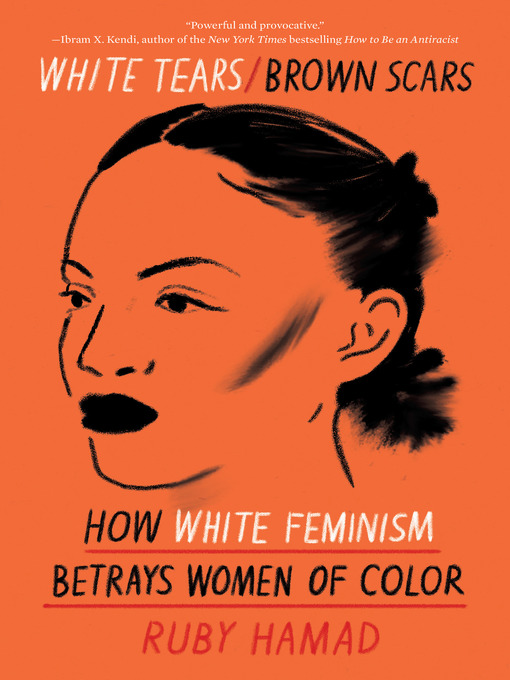
White Tears/Brown Scars
How White Feminism Betrays Women of Color
- اطلاعات
- نقد و بررسی
- دیدگاه کاربران
نقد و بررسی

July 15, 2020
An exhaustive look at how White women perpetuate White supremacy at the expense of women of color. Journalist Hamad picks up where her 2018 Guardian Australia article left off, delving into why White women's comfort is prioritized and their tears "weaponized" to further marginalize women of color. "When challenged by a woman of color," she writes, "a White woman will often lean into her racial privilege to turn the tables and accuse the other woman of hurting, attacking, or bullying her. This process almost always siphons the sympathy and support of any onlookers to the apparently distressed White woman, helping her avoid any accountability that may be due and leaving the woman of color out in the cold, often with no realistic option--particularly if it is a workplace interaction--but to accept blame and apologize." Whether responding to indignities such as White women petting their hair or to loss of career opportunities, women of color are treated as aggressors when they challenge bigotry. The author painstakingly documents how, historically and contemporarily, White women function both as "damsels in distress" and as defenders of White supremacy. From slavery and lynching to forced Indigenous child removals, White women have been "co-conspirators" with White men in racism and violence, often under the guise of protecting White womanhood. With scholarly but highly engaging prose, Hamad details White women's roles in oppression across continents, a much-needed history lesson for those inclined to reduce racism to individual behavior. The author clearly examines how this legacy of centuries of racial violence and White settler colonialism plays out today in the lives of Black, Asian, Latina, Indian, Muslim, Arab, and Indigenous women from around the world, told through their collective geopolitical histories and personal anecdotes. For readers truly interested in dismantling White supremacy, this is a must-read. An extraordinary book for anyone who wishes to pay more than lip service to truly inclusive, intersectional feminism.
COPYRIGHT(2020) Kirkus Reviews, ALL RIGHTS RESERVED.

Starred review from July 27, 2020
Journalist Hamad debuts with a searing and wide-ranging condemnation of “strategic White Womanhood” and “the historical debasement of women of color” in Western culture. Citing her own experiences as an Arab woman working in the “suffocatingly white Australian media space” and those of other “brown and black women” who have been routinely disbelieved, exoticized, or accused of bullying by white women, Hamad contends that the tears of white women are “a weapon that prevents people of color from being able to assert themselves or to effectively challenge white racism and alter the fundamental inequalities built into the system.” She analyzes cultural archetypes, including “the lascivious black Jezebel” and “the submissive China Doll,” that inhibit women of color, and compares the actions of “BBQ Beckys” who call the police on Black people for noncrimes to the lynching of Black men for “perceived transgressions against the virtuous bodies of white women.” Hamad also documents the exclusion of Black women from the suffrage movement and explains why white women’s inroads into white male power structures don’t benefit women of color. Skillfully blending autobiography, history, and cultural criticism, Hamad makes a devastating case against white women’s complicity in systemic racism. This insistent and incisive call for change belongs in the contemporary feminist canon.

September 1, 2020
Journalist Hamad's debut focuses on racism within feminist movements. Providing historical context for how feminism and racism have developed over time, the author argues that white feminists often reinforce racism by victimizing themselves in conflicts with people of color and seeking to maintain and advance their own privileges. Much of the book explores the history of colonialism and the ways in which white women actively participated in the oppression of people of color. The author also offers commentary on modern events that show how patterns in white women's harmful behavior toward women of color continue today. Just a few of the many topics covered include Hilary Clinton's presidential campaign, sexualization in the era of slavery, the history of the angry Black woman stereotype, and illustrative incidents in pop culture. At times, the book's structure is difficult to follow, but, overall, the author is direct and draws strong connections between historical situations and today's political climate. VERDICT Despite covering a great deal of content, the message and intent behind the text remain clear. Readers engaged with issues of race and feminism in Western countries will find this a powerful read.--Sarah Schroeder, Univ. of Washington Bothell
Copyright 2020 Library Journal, LLC Used with permission.




دیدگاه کاربران